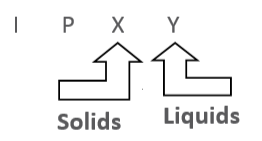Let us understand Ingress Protection Ratings or IP ratings

Let us understand Ingress Protection Ratings or IP ratings
We have all seen IP ratings at some point or the other. Many people do not comprehend what the numbers actually mean.
The goal of this article is to understand what IP ratings are and how to use them while selecting electrical products.
History of IP Rating
IP rating was developed by IEC (International Electrotechnical Commission). It is classified by different degrees of protection against extrusion and immersion.
Where do we use IP ratings?
Whenever an electrical product is being selected for a particular application, it must be ensured that the product is suitable for the application environment.
We often hear words such as “Water proof” or “Dust tight”, but what exactly these terms means and how can they be measured or quantified?
This is where IP ratings come into picture.
Basics of IP Rating
- IP stands for “Ingress Protection”
- This is an international standard
- It is easy to understand
- Measurable and testable numbers are used for ratings.
So what do the numbers mean?
IP rating is designated by using 2 digits which are mentioned after the letters IP. In the below example the two digits are represented by letters X & Y.

The first number (in our example is letter X) represents the protection level of that equipment or enclosure from solids. The solid can be as large as a human finger/hand or as small as particle of dust.
The second number (in our example is letter Y) will inform us about the protection level of that equipment or enclosure towards liquids. The liquid can be something as minuscule as mist or can be as extreme as a high pressure water jet.
Degrees of Protection – First Digit
The first digit of the IP code indicates the degree that persons are protected against contact with moving parts (other than smooth rotating shafts, etc.) and the degree that equipment is protected against solid foreign bodies intruding into an enclosure.
|
IP Number |
Protection from Solids |
|
0 |
No special protection |
|
1 |
Protection from a large part of the body such as a hand (but no protection from deliberate access); from solid objects greater than 50mm in diameter. |
|
2 |
Protection against fingers or other object not greater than 80mm in length and 12mm in diameter. |
|
3 |
Protection from entry by tools, wires, etc., with a diameter of thickness greater than 1.0mm. |
|
4 |
Protection from entry by solid objects with a diameter or thickness greater than 1.0mm |
|
5 |
Protection from the amount of dust that would interfere with the operation of the equipment. |
|
6 |
Dust tight. |
Degrees of Protection - Second Digit
The second digit indicates the degree of protection of the equipment inside the enclosure against the harmful entry of various forms of moisture (e.g. dripping, spraying, submersion, etc.)
|
IP number |
Protection from Liquids |
|
0 |
No special protection |
|
1 |
Protection from dripping water. |
|
2 |
Protection from vertically dripping water. |
|
3 |
Protection from sprayed water. |
|
4 |
Protection from splashed water. |
|
5 |
Protection from water projected from a nozzle |
|
6 |
Protection against heavy seas, or powerful jets of water. |
|
7 |
Protection against immersion. |
|
8 |
Protection against complete, continuous submersion in water. |
Conclusion
The degree of protection of the equipment inside the enclosure against the harmful entry of various forms of moisture (e.g. dripping, spraying, submersion, etc.)
If you have any questions or any additional information to improve this article please leave a comment below.

